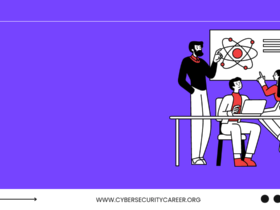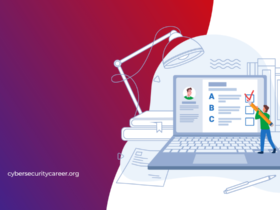No matter how well you plan, there’s always a chance that something will go wrong during your cyber attack. In the event of a breach, who is responsible for debriefing? As cyber security professionals, we are often asked this question. The short answer is that it depends on the type of cyber attack and the organization’s policies. However, in most cases, someone from the organization’s security team is responsible for debriefing. This article provides more information on who should be involved in the debriefing process and why it’s important. Read on to learn more about how best to protect your organization from a cyber attack.
Who is responsible for debriefing after a cyber attack?
The team responsible for debriefing after a cyber attack is typically the information security team or the team that initiated the attack. However, depending on the severity of the cyber attack, other teams may also be involved in the debriefing process. The purpose of the debrief is to gather information about what happened during the attack, identify any vulnerabilities exploited, and determine how to prevent future attacks.
The debrief may also include the review of any logs or other data collected during the attack.
What is a cyber attack?
A cyber attack occurs when a malicious actor uses electronic methods to inflict damage on a target. The most common scenario involves infiltrating networks and exploiting vulnerabilities to access data or systems. Once inside, the attacker can disseminate malware or use phishing schemes to steal login credentials or other sensitive information.
The Federal Bureau of Investigation (FBI) conducts forensic investigations after cyber attacks. Investigators work closely with private sector organizations, such as Symantec, to identify perpetrators and develop leads in the case. In some cases, the FBI may also take direct action against attackers, such as through the use of malware Countermeasures or by infiltrating their networks and taking them down.
As cyberattacks continue to evolve and become more sophisticated, all parties involved in an incident must be able to communicate and collaborate effectively. Debriefing sessions help ensure that all participants clearly understand what took place during a cyber attack, what was affected, and how best to prevent future incidents.
What are the different types of cyber-attacks?
Cyber attacks can come in many different varieties. Some are aimed at causing damage to computer systems, while others are designed to steal data or disrupt operations. Depending on the type of attack, there may be different teams responsible for debriefing after it occurs.
Here are some of the most common types of cyber attacks:
- Hacker Attacks: hacker attacks are typically carried out by unauthorized individuals who want to gain access to sensitive information or steal data.
- Worms and Spyware: These attacks use viruses and malicious software to damage or steal computer data.
Cyber security
Cyber security is a rapidly growing field, and teams are always changing. However, the team responsible for debriefing after a cyber attack is typically the incident response team. This team is responsible for gathering all of the information from the investigation and putting it together to create a comprehensive report that can help prevent future attacks.
Incident response
After a cyber-attack, the first step is determining which team is responsible for debriefing. It may be the incident response team, or it may be a different team altogether, depending on the organization’s structure.
Once the response team has been determined, they need to start debriefing their members. The debriefing process can vary depending on the type of cyber attack that occurred. Still, typically it includes discussing what happened, how it happened, and how to prevent it from happening again.
Debriefing is important in investigating and mitigating cyber attacks, so teams should do it properly. If done incorrectly, it can lead to confusion and wasted resources.
Debriefing processes
After a cyber-attack, debriefing the team responsible for the attack is important to understand what happened and how to prevent future incidents. There are multiple ways to debrief a team after a cyber attack, and the process depends on the type of attack.
A traditional fault-tolerant attack, such as an SQLi or Cross-Site Scripting (XSS) attack, typically involves an attacker exploiting one vulnerability on a web server and then using that vulnerability to inject malicious code into web pages visited by other users. In this type of attack, the responsibility for debriefing falls squarely on the shoulders of the Database Administrators who created and configured the vulnerable web server.
In contrast, an opportunistic cyberattack involves attackers targeting vulnerable systems without prior knowledge of their vulnerabilities. These attacks can be much more difficult to defend against because they rely on chance encounters with vulnerabilities in target systems. In this type of attack, the responsibility for debriefing falls on whoever is responsible for securing those systems: the System Administrator or Security Officer.
Regardless of the type of cyberattack, it is important to discuss what happened and how to prevent future incidents. It is also important to track any changes in the security posture resulting from the attack to ensure that your organization remains safe from further attacks.
How to prevent a cyber attack?
There is no one-size-fits-all answer to this question, as the responsibility for debriefing after a cyber attack will vary depending on the size and complexity of the organization involved and the specific circumstances of the attack. Nevertheless, some general tips on how to prevent a cyber attack from happening in the first place include:
- Establish a cybersecurity policy that all employees are aware of.
- Secure all systems and data against unauthorized access.
- Install antivirus software and keep up to date with security patches.
- Keep an eye out for suspicious emails or online activity that could indicate an imminent cyberattack.
- Ensure all employees have basic cybersecurity skills to identify and report potential threats.
How will I know if something happened during an attack?
If you experience any suspicious activity or unexpected results from a cyberattack, you should immediately contact your organization’s IT team for further investigation. Additionally, you can use online resources to help identify any potential signs of a cyberattack, such as the Shodan search engine.
What should I do if I’m the victim of a cyberattack?
If you’re the victim of a cyberattack, the first thing you should do is contact your organization’s IT team for assistance. After that, you may want to take some basic steps to protect yourself and your data, such as:
- Change your passwords and security settings on all relevant accounts.
- Keep up to date with security patches and antivirus software.
- Don’t open unexpected emails or attachments from unknown sources.
Conclusion
Every business needs to have a protocol for debriefing after an attack. Depending on the severity of the incident, one organization may be responsible for external briefing parties, while another is responsible for debriefing employees. This process allows everyone involved with the cyberattack to learn from their mistakes and ensure they are better prepared next time.










Leave a Reply